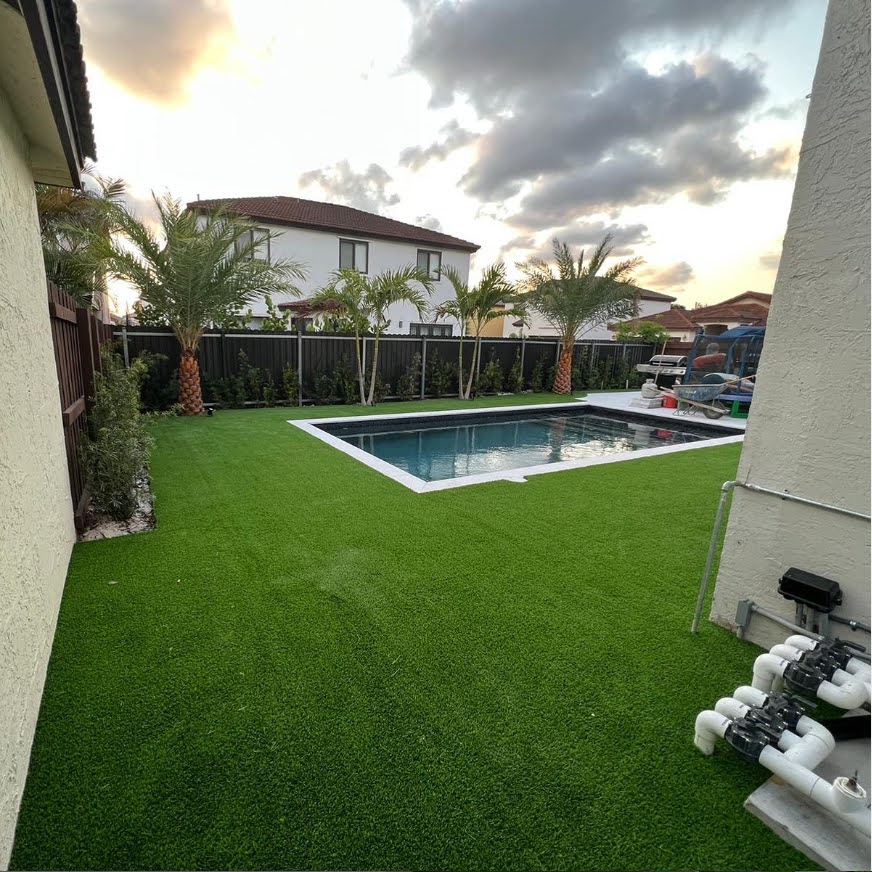Installing synthetic grass is an excellent way to achieve a lush, green lawn with minimal maintenance. However, as with any home improvement project, certain safety precautions should be taken to ensure a safe installation and long-term use. Here are some key safety considerations to keep in mind when dealing with synthetic grass.
1. Proper Installation
Ensuring that synthetic grass is installed correctly is crucial for both safety and longevity. Here are some installation tips:
- Ground Preparation: Make sure the ground is properly leveled and free of debris, rocks, and sharp objects that could damage the synthetic grass or cause injuries.
- Base Material: Use a high-quality base material, such as crushed stone, to create a stable foundation that promotes proper drainage.
- Secure Edges: Properly secure the edges of the synthetic grass to prevent lifting and tripping hazards. Use stakes, nails, or landscape edging to keep the turf in place.
- Infill Material: Use appropriate infill materials, such as silica sand or rubber granules, to keep the grass fibers upright and provide cushioning. This also helps with drainage and reduces the risk of injury from falls.
2. Heat Management
Synthetic grass can become hot in direct sunlight, especially in warmer climates. To prevent heat-related injuries:
- Choose Heat-Resistant Products: Look for synthetic grass products designed to reflect heat and stay cooler.
- Install Shade Structures: Provide shade through umbrellas, awnings, or trees to keep the surface temperature down.
- Water the Surface: Lightly spraying the synthetic grass with water can help cool it down before use.
3. Fire Safety
Synthetic grass is made from flammable materials, so taking fire safety precautions is essential:
- Keep Flames Away: Do not use fire pits, BBQ grills, or any open flames directly on or near synthetic grass.
- Avoid Cigarettes and Matches: Discourage smoking or using matches near synthetic grass to prevent accidental fires.
- Install Fire Breaks: Consider installing non-flammable materials, such as stone or brick, around the perimeter of the synthetic grass area as a fire break.
4. Chemical Safety
Certain chemicals can damage synthetic grass and pose health risks:
- Use Safe Cleaners: When cleaning synthetic grass, use mild, non-toxic cleaners. Avoid harsh chemicals like bleach or acidic cleaners that can degrade the turf fibers.
- Pesticide-Free: One of the benefits of synthetic grass is that it does not attract pests, so there is no need for chemical pesticides.
5. Regular Maintenance
Even though synthetic grass is low maintenance, regular care is still important for safety and longevity:
- Remove Debris: Regularly clear the surface of leaves, branches, and other debris to prevent mold growth and maintain a clean, safe play area.
- Brush the Turf: Periodically brush the turf fibers to keep them upright and evenly distributed, which helps maintain a consistent and safe surface.
- Check for Damage: Inspect the turf regularly for any signs of wear, tear, or damage. Promptly repair any issues to prevent tripping hazards and maintain the integrity of the surface.
6. Health Considerations
Ensure the health and safety of users by considering the following:
- Hygienic Surface: Artificial grass is generally more hygienic than natural grass. However, regular cleaning is still necessary, especially in areas where pets or children play.
- Antimicrobial Infill: Consider using antimicrobial infill materials to prevent the growth of bacteria and maintain a clean surface.
- Allergy-Friendly: Synthetic grass is hypoallergenic, making it a good choice for individuals with grass allergies. Ensure that no allergens are introduced during installation and maintenance.
7. Proper Use
Educate users on the proper use of synthetic grass to prevent accidents and ensure longevity:
- Footwear: Encourage the use of appropriate footwear to avoid damaging the turf and reduce the risk of slips and falls.
- Avoid Sharp Objects: Keep sharp objects, heavy equipment, and vehicles off the synthetic grass to prevent punctures and damage.
Conclusion
Synthetic grass offers many benefits, including low maintenance and year-round greenery. However, taking proper safety precautions is essential to ensure a safe and enjoyable environment. By following these guidelines for installation, heat management, fire safety, chemical use, regular maintenance, health considerations, and proper use, homeowners can maximize the safety and longevity of their synthetic grass installations.
TK Turf
2913 W Cypress St Suite 2, Tampa, FL 33609
(813) 534-4220
https://turfgrasstampabay.com/

synthetic turf install

Recent Comments